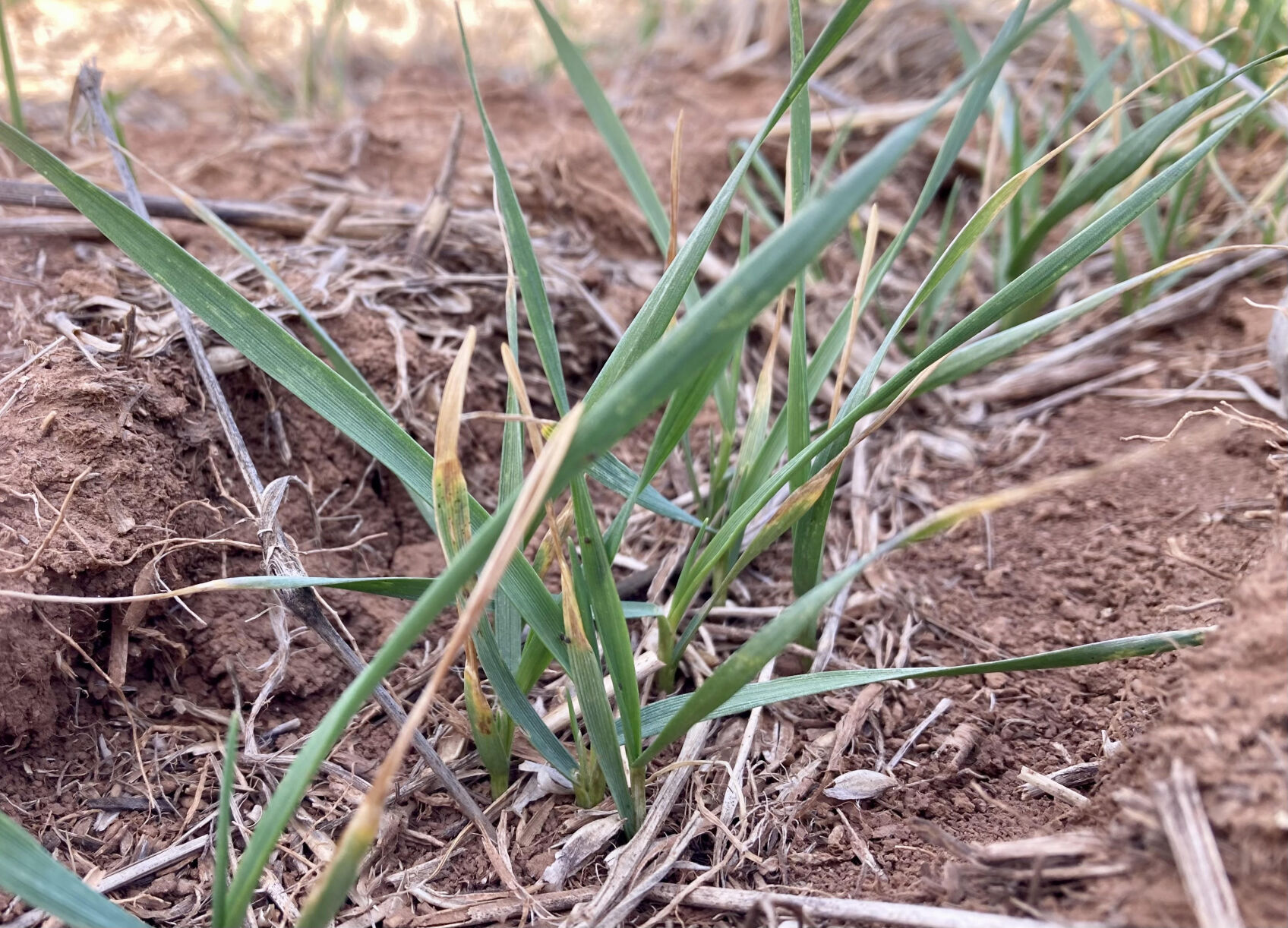As 2022 transitioned into 2023, drought conditions have continued to plague the current wheat crop and many producers in the High Plains have reported mites in their fields. Tom Royer, integrated pest management coordinator and Extension entomologist at Oklahoma State University, said rain is crucial at this point.
“The wheat crop is thirsty and that is due to late planting,” he said. “We don’t have much subsoil moisture to sustain the crop once the weather warms and the plants start to emerge from winter dormancy. The bottom line is we need rain.”
As far as mites, Royer said the calls he has received from Oklahoma producers this year have been pertaining to winter grain mites. Although they are thought of as insects, mites are actually arachnids and are closely related to spiders and ticks. According to Royer, the winter grain mite is commonly found in most of Oklahoma, with the exclusion of the Panhandle. Royer stated this mite can be identified by a dark blue or black body with dark orange legs and an orange or red spot on the upper abdomen. Additionally, the front legs are somewhat longer than the back legs. The winter months are when they are most prevalent and can cause damage to crops—their populations typically thin out when warmer temperatures arrive.
“It has been cool and dry, which are favorable conditions for winter grain mites,” Royer explained. “Winter grain mites also favor continuous wheat production and even more if there is minimum tillage with wheat residue. Brown wheat mites are not really an issue right now, but last spring when it turned hot and dry, they became a problem. Both mites have caused problems in the past, but they are very irregular in their occurrence.”
According to Royer, wheat fields that have a silvery-gray color, leaf tips that turn brown and stunted plant growth may be infested with mites. He notes winter grain mites are easier to observe on overcast days or in the morning or evening. He said an effective way to check for these mites is to shake the stem of the plant onto a piece of white paper and the mites are more likely to be visible against the contrast of the color of the mites and the paper.
“My standing advice for producers is to regularly check their fields first hand, watch the crop’s progress and note any issues they see,” he said. “In addition to mites, we always need to watch for aphids, and maybe this year, army cutworm simply because the crop was planted so late. When in doubt about a problem, talk to an Extension ag educator to get advice, or send in plant samples for diagnosis to our plant disease and insect diagnostic lab. Our county ag educators are well equipped to assist, and they know which appropriate Extension specialist they can contact to get answers and suggestions if it is a more difficult problem.”
Lacey Vilhauer can be reached at 620-227-1871 or [email protected].




